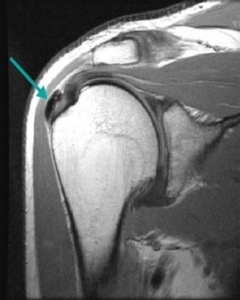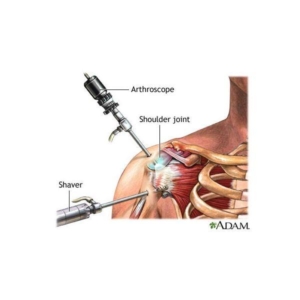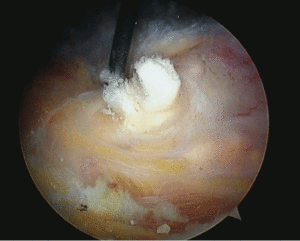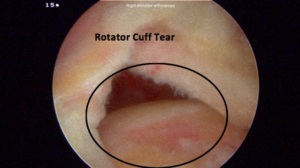What is Shoulder Calcific Tendonitis?
The shoulder complex is a ball and socket joint and is comprised of several groups of muscles, three bones and several soft tissue structures including ligaments, a joint capsule, soft tissue, and labrum. Each of these components work together to create a stable structure permitting the true function of shoulder movement, strength and stability. The rotator cuff and consists of the supraspinatus, infraspinatus, teres minor and subscapularis.

Calcific tendonitis can be one of the most painful entities treated in orthopedics today. Calcific tendonitis occurs when calcium builds up within the rotator cuff tendons. This build up causes dysfunction of the fluid movement of the rotator cuff during activities/tasks. The deposit causes painful symptoms at rest and especially with movement and activity. It is unknown why or how these typically begin but are common within the 30-60 year old population. Typically this condition is non-surgical and will resolve with conservative treatments.
Symptoms
Symptoms include tenderness throughout the shoulder complex, but primarily located in the front (anterior) and outside (lateral) portion of the shoulder. Signs of this condition can be at rest or with activity. Pain will occur with activities above the shoulder including rotational pain, feelings of tightness, weakness with extended activities above the shoulder, and difficulty reaching across the chest or behind the back.
Diagnosis
Diagnosis will be determined through a thorough history and physical examination by a trained sports medicine and orthopedic shoulder specialist. Examination will consist of palpating the shoulder complex for pain. The clinician will check both active and passive range of motion. Specific manual tests will be performed by the specialist to determine if inflammation exists, the amount of weakness and other possible factors causing symptoms. Once the initial diagnosis has been made, an X-ray of the shoulder complex will be ordered to determine if a calcific deposit is present within the rotator cuff tendons or if any additional bony pathology exists.
.

Calcific Tendonitis (x-ray)

Calcific Tendonitis (MRI)
Treatment
Treatment goals are to improve the functionality of the shoulder complex by increasing strength, decreasing pain. Traditionally, these results are obtained through conservative management 95% to 98% of the time. A specific individualized treatment program will be created from your thorough history, physical examination and radiological testing. Conservative management consists of a modification of activity and possibly rest, anti-inflammatory medications, a cortisone injection and formal physical therapy. Conservative treatment, when successful will resolve signs and symptoms in 6-8 weeks. Only 2% to 5% of individuals fail conservative treatment in which then surgical management may be recommended.
Shoulder Arthroscopy
Shoulder arthroscopy, occurs when a small camera is placed into the shoulder joint to visualize the damage. During this visualization, ligaments, bones, and muscles of the shoulder complex are further assessed by the orthopedic surgeon.

Once the assessment has been completed the surgeon uses a variety of instrumentation to decompress the calcific deposit. If the area within the rotator cuff is large enough once void of the calcium a rotator cuff repair will be performed.

Calcific tendonitis seen via arthroscopy

Post Calcific Debridement via arthroscopy
The rotator cuff is reattached with either a bio-composite or titanium anchor. From this anchor come three non-dissolvable sutures that are intertwined into the rotator cuff. This allows the surgeon to reattach the rotator cuff to its original location for healing. Augmentation of the rotator cuff repair can also be performed at the end of the procedure with orthobiologics such as PRP (platelet rich plasma) injections or Stem cell injections.
Rehabilitation
Rehabilitation post-operatively will begin immediately. Patients will be placed into a sling for 4-8 weeks pending the size of the initial tear and post-surgical repair. A home exercise program will begin immediately following surgery. These exercises will be performed until formal rehabilitation can begin two weeks following surgery. A physical therapist will begin your formal rehabilitation through a planned rehabilitation protocol. Initially, the physical therapist will advance pain-free passive range of motion. This pain-free range of motion will be obtained within the first 8-10 weeks. During the healing phase of the rotator cuff, which takes 4 months, no active motion of the shoulder will be allowed, as active motion is detrimental to the repair. During this time, some strengthening will occur including parascapular and isometric strengthening of the rotator cuff.
